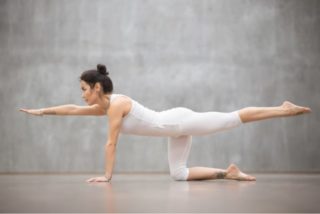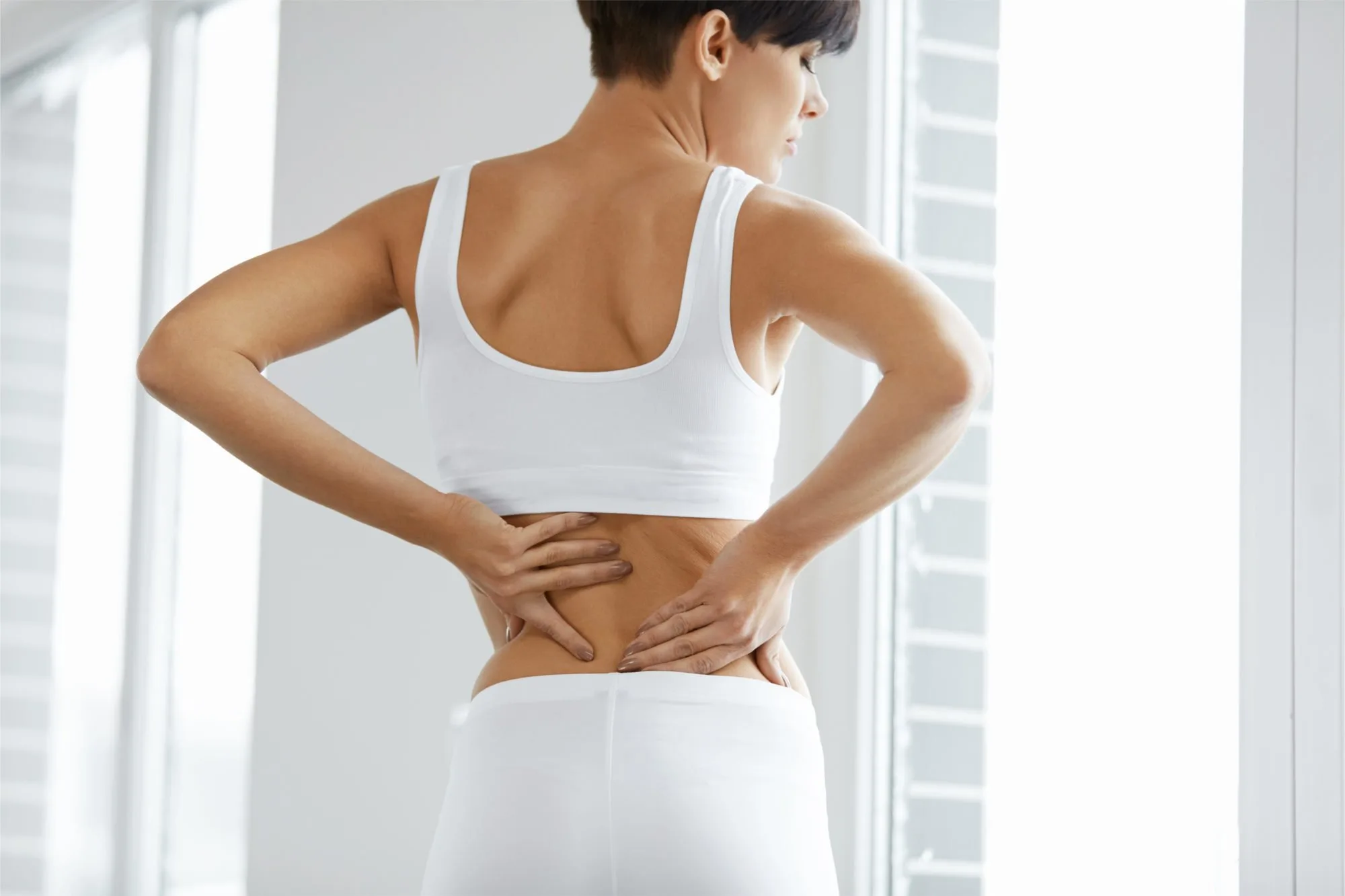We all know that being inactive is not good for us. However, a sedentary lifestyle is about more than that. Sometimes, we can think we’re doing everything right by getting our 10 000 steps in every day or doing a 2km run every morning. But actually, according to Gary Arenson, physiotherapist and managing director of Ergotherapy, we still might be living sedentary lifestyles.
What is a sedentary lifestyle?
![blue light eye sedentary [longevity live]](https://longevitylive.com/wp-content/uploads/2019/10/design-desk-eyewear-313690-320x240.jpg) Essentially, a sedentary lifestyle is any lifestyle with very little movement involved. It consists of mostly sitting or lying down usually with very little exercise. However, according to Arenson, it’s more about consistent movement than it is simply about exercise. For instance, he explains that whilst exercise is vital for your health and a morning run or jog is a fantastic idea; It doesn’t mean that you aren’t living a sedentary lifestyle. If, for instance, you get up and go for a run or a walk, but sit for the duration of your work hours, your lifestyle is still sedentary. Sedentism is about long periods of sustained lack of movement. In order to
Essentially, a sedentary lifestyle is any lifestyle with very little movement involved. It consists of mostly sitting or lying down usually with very little exercise. However, according to Arenson, it’s more about consistent movement than it is simply about exercise. For instance, he explains that whilst exercise is vital for your health and a morning run or jog is a fantastic idea; It doesn’t mean that you aren’t living a sedentary lifestyle. If, for instance, you get up and go for a run or a walk, but sit for the duration of your work hours, your lifestyle is still sedentary. Sedentism is about long periods of sustained lack of movement. In order to
What are the dangers associated with a sedentary lifestyle?
Sedentism or living a sedentary lifestyle is dangerous for our overall health as humans. At its core, living a sedentary life simply means that you rest a lot and take little exercise. However, it isn’t as simple as we might think to counteract. For instance, an hour-long gym session at the end of the day won’t negate a sedentary lifestyle.
Humans aren’t actually built to sit, we are supposed to stand upright. Because of this, the body works much more efficiently when we are upright than when we are sitting. This is one of the reasons that bedridden people struggle so much with bowel movements and muscle fitness. The whole cardiovascular system works more efficiently when we are standing which is what leads to physical activity making us feel better.
An increase in physical activity will make you feel better overall. Energy levels increase as do endurance and bone health. It is important to add that if you are injured, you should rest until you are better. Once you are fully healed, you can once again increase exercise and standing.
How bad is sitting?
Of all the resting positions, sitting is the worst. This is because of the pressure it puts on the lumbar of your spine. Arenson suggests a combination of  sitting and standing. He also mentions that a more practical approach is always better.
sitting and standing. He also mentions that a more practical approach is always better.
You don’t, for instance, want to be making radical changes. It’s likely that if the changes are too radical, you’ll forget to implement them. Rather try to include something like standing and walking around during a phone call. Stretching in-between emails, or when you want a sip of coffee, will be much easier to integrate and are movements that are likely to come naturally. Some health professionals go as far as to say that sitting is ‘the new smoking’.
That’s just how bad it is for your health. Sitting or lying down for extended periods is bad for your health, but sitting is the worst. It can substantially increase your risk of developing chronic diseases. According to BetterHealth, these include “health problems, such as heart disease, diabetes, and some cancers”. Sitting isn’t just bad for your physical health, it’s also bad for your mental health. It’s not as well understood as the connection between sitting and physical health. However, the risk of anxiety and depression is higher in people who sit for extended periods of time.
How it’s associated with back pain
The hips and back are not designed to support you properly when you spend large periods of time sitting. Sitting causes the “hip flexor muscles to shorten” which can lead to problems with the hip joints. Ergonomically designed chairs are imperative when it comes to working from a desk for extended periods of time. Poor posture is the leading cause of poor spine health. It can cause compression in the spinal discs which leads to premature degeneration.

Photo by Karolina Grabowska from Pexels
Other negative effects
A sedentary lifestyle isn’t just associated with back pain. Other negative effects of spending too long sitting down include an increased risk of
- Anxiety and depression
- Cancer
- Diabetes
- Heart disease
- Overweight and/or obesity
- Weakening in the legs and gluteals
- Development of varicose veins
- Deep vein thrombosis
- Stiff neck and shoulders
How to help to reduce the strain on your back
The pandemic really hasn’t helped at all in this regard. With more people stuck working from home, there is an increased risk of back pain as a result of not sitting correctly. People have also been getting less exercise as a result of not being able to walk around shops, walk their dogs or even walk to work. Generally, when we are outside of our houses, we tend to move more. You might get up to have a chat with a colleague or go to the shop to get something to eat.
In offices, people often have well-designed, ergonomic chairs which are designed to support the back. However, many of us don’t have these at home. Instead, we are using dining rooms or kitchen chairs which are not designed for us to sit in for long periods of time. This leads to increased back pain and more difficulty when it comes to sitting for extended periods of time. One of the main ways to conquer this is to alternate sitting and standing.
Arenson recommends what he called the hour rule. This means not sitting for more than an hour at a time. He adds that to achieve a less sedentary

Photo by Karolina Grabowska from Pexels
lifestyle, there needs to be a mind shift. We all need to be more aware of how we are sitting; when we are sitting and for how long. Arenson also has some recommendations when it comes to sitting at your desk:
If you’re short
Shorter people tend to sit on the edge of their seats so that their feet touch the ground. This is incredibly bad for the back. Instead, you should sit back against the chair and use a footrest so that your body is sitting more naturally. The desk surface is also important, we tend to push our laptops to the back of the desk. This is so that we can keep paperwork or diaries in easy reach. Instead, your laptop and mouse should be right at the front of your desk. Papers should be moved either to the side or to the back of the desk.
If you’re tall
Tall people tend to sit much better than shorter people. However, the laptop or screen tends to be below eye level. This means that they tend to sit with the neck bent forward. In the case of a laptop, it should be tilted so that the keyboard is lower than the screen. This can be done with a laptop stand. Alternatively, a cheaper (if not perfect) option is to use a file. Monitors should also be lifted, you don’t need one of the fancy stands. Instead, you and stand it on some books (as long as it’s secure).
For children
When it comes to children, it’s vital to adjust the desk for their comfort. A footrest is a necessity. Depending on how young and how tall the child is, a seat rest and/or pillows at the back of the chair may be necessary for a proper sitting position.
If you can afford to spend the extra money, a standing desk is a great investment. They can really help you to increase your standing time. The most important thing is not to get ‘stuck to your keyboard’ and forget to move. You can help yourself by setting hourly reminders on your phone to stand up or move around a bit. Apple watches or Fitbits are also great for ‘standing’ reminders.
The best exercises to do for back pain are walking or swimming. Whilst walking is a great option, swimming is the best. Swimming relieves lower back pain and is brilliant because it is low impact. Water takes the weight of your body. Weights are also brilliant for strengthening muscles but must be used properly, you should be extremely cautious and make sure that your posture is correct.
How to put an end to your sedentary lifestyle?
Some simple ways to increase your movement around the house or office are:
- Get up and walk around whilst on phone calls
- Make sure you move or change positions at least every hour
- Walk around during commercials on TV or stand for part of your Netflix episode or movie
- Do some heel raises (Evelyn O’Neill, manager of outpatient exercise programs at the Harvard-affiliated Hebrew Rehabilitation Centre recommends doing these whilst you brush your teeth).
- Use soup cans or water bottles as weights
- Do some stand and sit exercises. O’Neill recommends “10 reps of stand-and-sit exercises, where you rise from a chair without using your arms and then sit down again to complete one rep”.
- Use the stairs instead of the elevator (lift) or escalators
- Go for a walk during your lunch break
- Go for a walk with your dog (if you have one) either around the neighborhood or in your local park.
How to alleviate back pain

fizkes/shutterstock
Arenson says that the main focus when you develop back pain is to try and identify the cause. You need to isolate when the pain begins and make sure that you stay below the pain threshold. For instance, if the pain develops after an hour of working at the desk, work for 45 minutes and then take a break to stand and move.
Other ways to alleviate back pain as a result of sitting for too long, according to Arenson include
- Lying flat on your back with your knees bent
- Stretch the lower back and hamstring regularly
- Increase flexibility through exercise such as pilates
If your pain has persisted for a week, you need to see a professional. Arenson says that really, there’s not much difference between seeing a physiotherapist and a chiropractor. As long as they’re good at their job and take a holistic view when it comes to cause and symptoms. Many chiropractors and physiotherapists are ‘super specialists’ in a particular area of the body. If you aren’t seeing a significant improvement by the third or fourth session, it may be time to move on. This is not true if you are recovering from a specific injury or operation.
References
Interview with Dr. Gary Arenson 2021
https://www.betterhealth.vic.gov.au/health/healthyliving/the-dangers-of-sitting
https://medlineplus.gov/healthrisksofaninactivelifestyle.html



![women [longevity live]](https://longevitylive.com/wp-content/uploads/2020/01/photo-of-women-walking-down-the-street-1116984-100x100.jpg)










